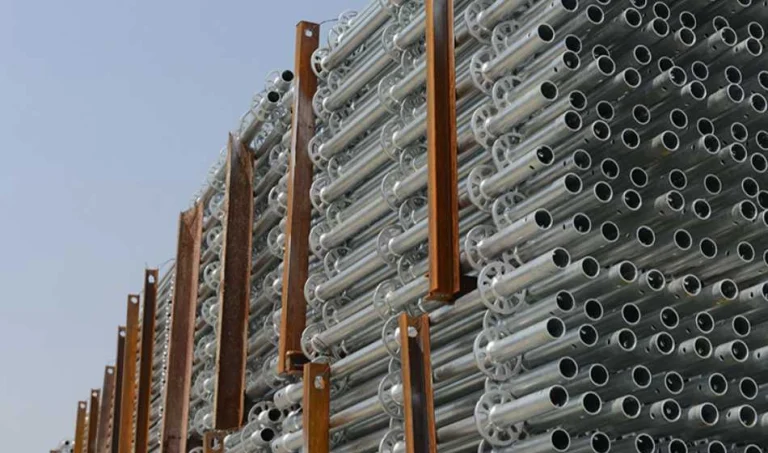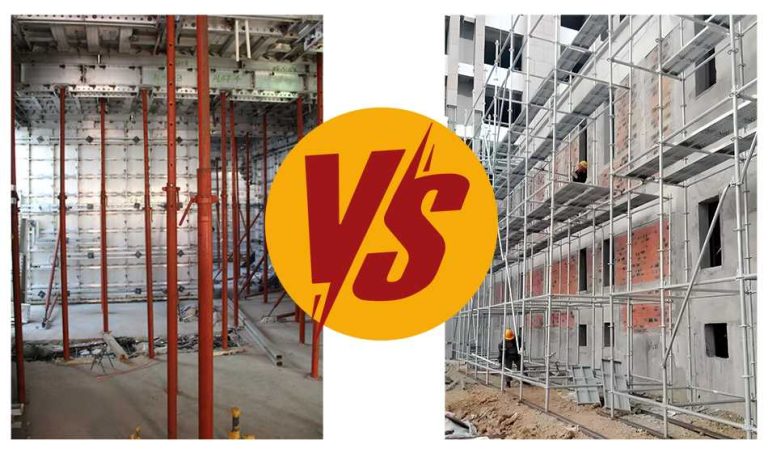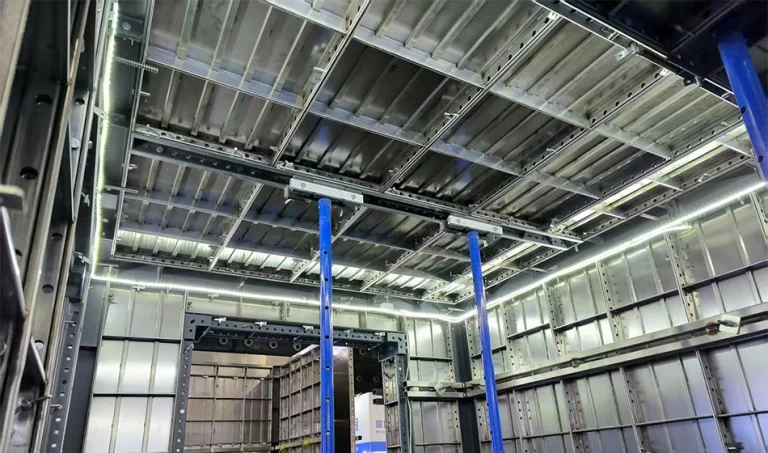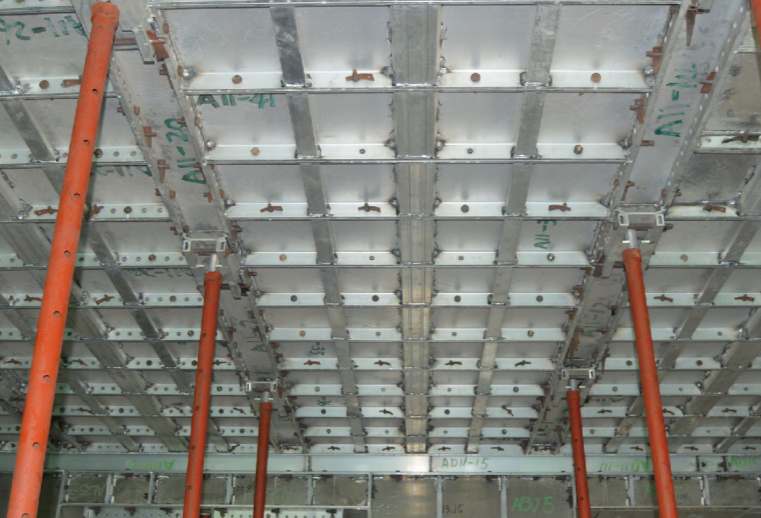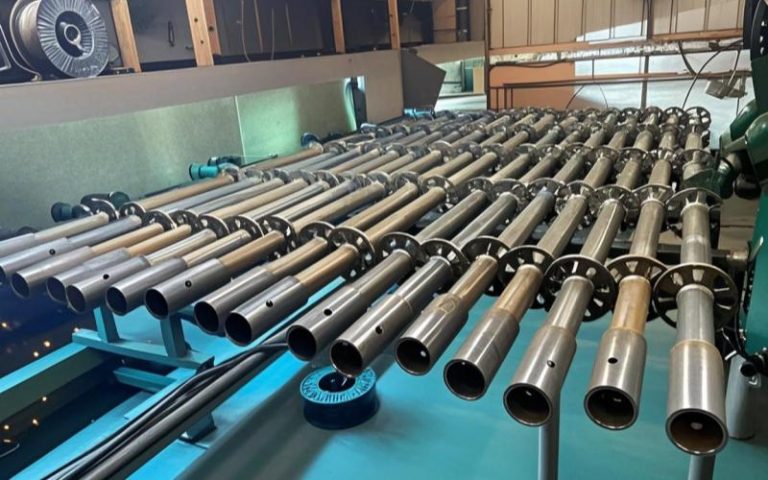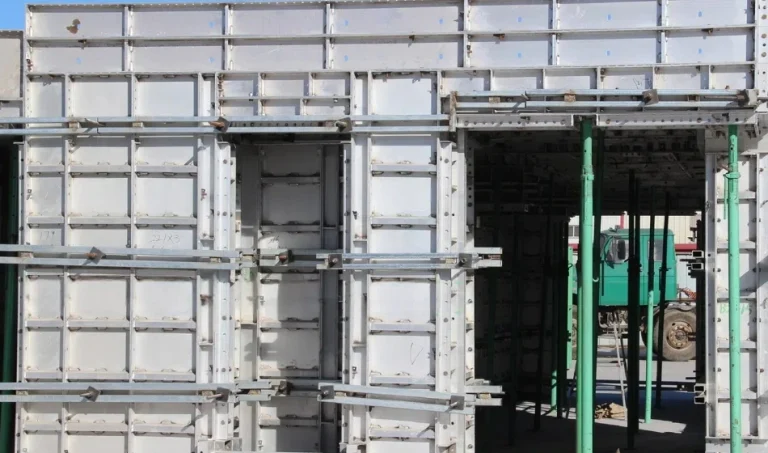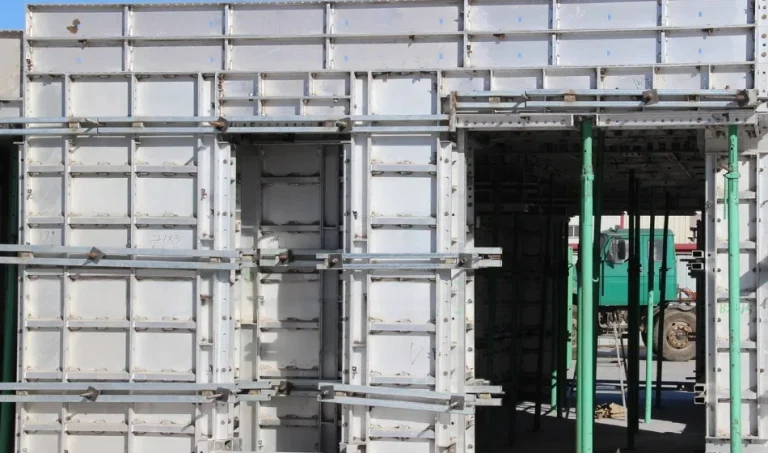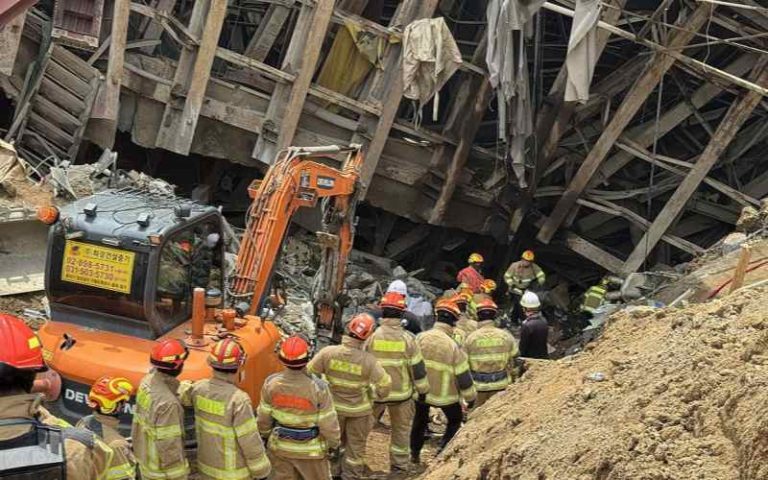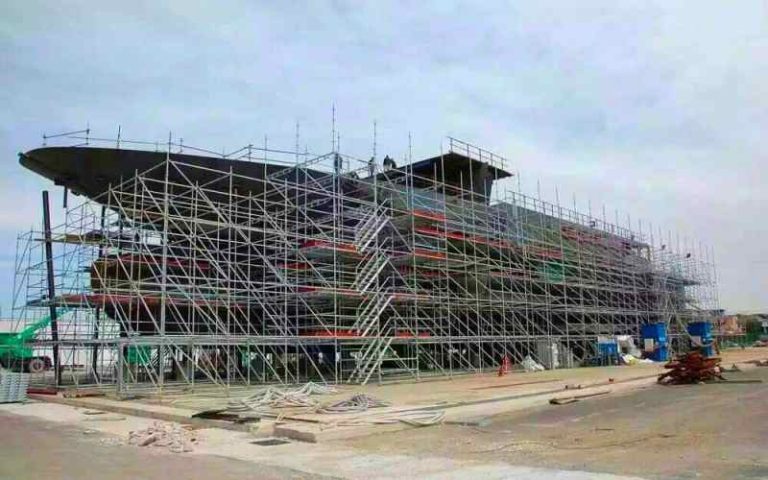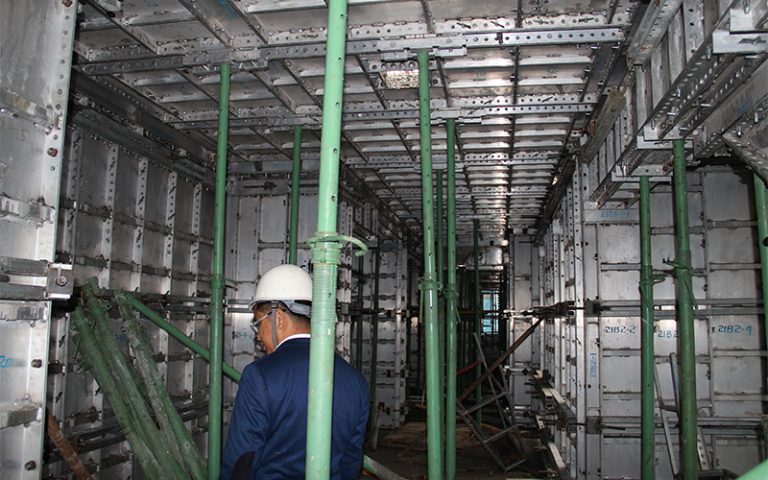What is the difference between shoring and scaffolding? Both help with construction; however, shoring gives structures temporary support, while scaffolding gives workers a place to work during construction or repairs.
The fundamental distinction between shoring and scaffolding is their use. Shoring temporarily holds up a structure while it is being built or fixed. Scaffolding, however, allows workers to operate at a higher level. Scaffolding is meant to make it easier to get to and move around, while shoring keeps walls and foundations stable.
Both shoring and scaffolding are temporary structures used in building; however, they have different main uses:
Scaffolding
The primary purpose of scaffolding is to give workers access to high places to operate. Its principal jobs are:
- Giving workers temporary raised platforms to stand on while they do their jobs
- Allowing access to work locations at height for building, fixing, or maintaining
- Holding up workers and materials at high places
Essential features of scaffolding:
- More adaptable to varying heights and constructions that aren’t straight
- Usually has a safety factor of 4
- OSHA Subpart L talks about the rules for protecting people from falling.
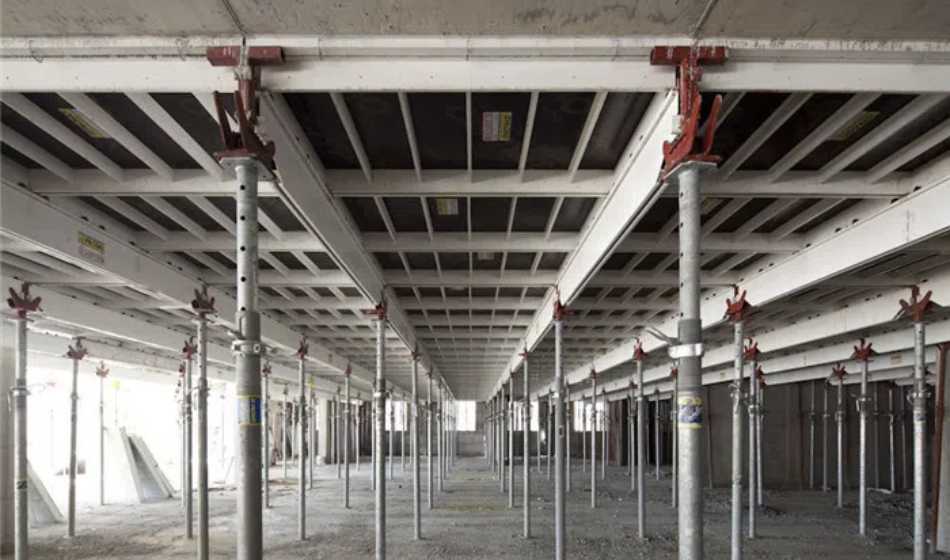
Shoring
The primary purpose of shoring is to give structures or formwork temporary support. Its principal jobs are:
- Supporting formwork for concrete slabs and bridge decks as they are being poured
- Supporting structures temporarily while they are being built, remodelled, or fixed
- Keeping walls, floors, and roofs from falling while work is going on
Some important things about shoring are:
- Made to hold more weight, such as the weight of concrete and other construction materials.
- Usually has a safety factor of between 2 and 4
- OSHA Subpart M talks about what you must do to prevent yourself from falling.
Key Differences
Main goal: The key distinction is what the platform or deck is meant for. Scaffolding is something that workers stand on while doing something else. Shoring is what you call it when it’s mostly part of the formwork or structural support.
Ability to hold weight: Shoring usually carries heavier weights than scaffolding.
Requirements set by the government: Different rules and safety standards apply to scaffolding and shoring, especially when protecting people from falling.
Adaptability: Scaffolding is usually better at working with different heights and uneven structures, while shoring focuses on giving steady support.
It’s crucial to remember that the name of the equipment doesn’t always tell you what kind it is. For instance, shoring frames can be utilized in scaffolding systems, and scaffold frames can be used as shoring parts. The system’s primary purpose is to decide if it is shoring or scaffolding.
Now that we’ve found the main distinction, let’s look more closely at how shoring and scaffolding are used in construction and when each is best for the job.
What is shoring?
Are you curious about shoring? Shoring is a construction process that provides temporary structural support to keep walls, foundations, or other buildings stable while being repaired or built.
Shoring is the temporary support that keeps walls, foundations, and other buildings stable while they are being built or dug up. It is important to prevent things from falling down during big construction projects or repairs that could weaken the structure.
Shoring is putting temporary supports under walls, foundations, or excavations to keep them from falling while work is being done on them. People commonly utilize it when digging or making changes to a structure, making it less stable, and there is a chance that it will fall down. Raking shoring, flying shoring, and dead shoring are all common types of shoring. Each one has its use based on the necessities of the project. Shoring is essential for keeping the building safe and sound throughout construction, especially when soil movement or digging makes it unstable.
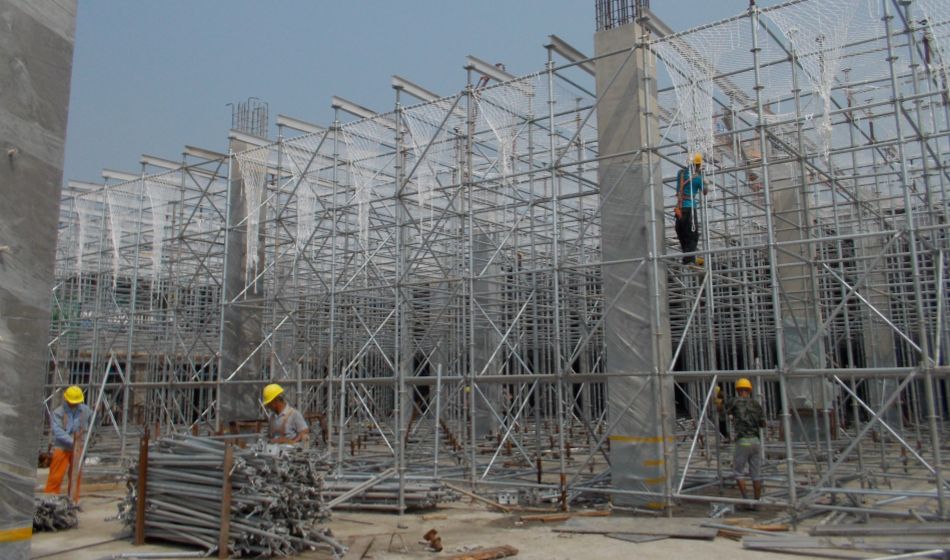
What is scaffolding?
Do workers need to get up high? Scaffolding gives workers a safe place to operate at different heights, do construction work, and move tools or goods during building projects.
Scaffolding gives people safe places to operate at varied heights. People often utilize it for building, renovating, and maintaining things that are high up or hard to get to.
Scaffolding is a temporary structure that gives workers a place to work on construction, maintenance, or repairs at different heights. Scaffolding is a framework comprising poles, platforms, and braces connected to each other. It goes around buildings and other structures. It helps workers get to places that are hard to get to, such as rooftops, outside walls, or upper floors. Scaffolding is distinct from shoring in that it is mainly meant to keep workers safe and give them easy access to different levels while keeping their tools and materials close by. Scaffolding is necessary to keep construction activity above ground level safe and efficient.
When to Use Shoring in Construction Projects?
Want to know more about shoring? People often employ shoring while they are digging, fixing a foundation, or renovating a building if the soil is moving or the structure is changing, which could cause it to collapse.
People often use shoring to give temporary structural support when they are digging, working on a foundation, or remodeling a building. It helps keep walls, foundations, and other structures stable during big construction projects when the structural integrity can be at risk.
Shoring is used in many construction projects to keep parts of a building, like a wall or foundation, from falling down. The most common places to observe it are excavations, where moving soil can make nearby structures less stable, and during foundation repairs, where shoring temporarily supports weak or damaged portions. Shoring is also employed when significant changes are being made to a building’s structure, such as adding floors or changing walls. In these situations, shoring gives the structure the support it needs until it can be finished safely and stand on its own.
When to Use Scaffolding in Construction Projects?
Are you curious about how scaffolding is used? When people need to operate at heights or on structures with more than one story, scaffolding is utilized to make sure they can do so safely.
When workers need to get to high places, they utilize scaffolding to build, renovate, or maintain buildings. It is very important for jobs like bricklaying, painting, roofing, and other work that needs to be done high up to have safe platforms for workers.
Scaffolding is utilized in many building and maintenance operations when workers need to get to high or hard-to-reach places. It is beneficial for building construction, where scaffolding is built around buildings to offer workers safe access to the upper levels and outside. Scaffolding is also often used for renovations, especially on significant buildings or buildings with more than one floor, when access from above is essential. Scaffolding is also necessary for maintenance tasks like cleaning windows, fixing roofs, or painting structures. Scaffolding gives workers a safe place to traverse between levels when they need to work at heights.
What are the main differences between shoring and scaffolding?
Are you unsure of what sets them apart? Shoring keeps a structure from falling by giving it support. Scaffolding, on the other hand, creates raised platforms that allow workers to reach and work on different portions of a structure.
The main distinction between shoring and scaffolding is their use. Shoring provides temporary structural support to prevent buildings from falling while being built. Scaffolding, on the other hand, gives workers safe places to work. Shoring prevents buildings from falling, while scaffolding allows people to go to high places.
The main distinction between shoring and scaffolding is what they are used for. Shoring is used to give temporary support to walls, foundations, or other components of a building so that they don’t fall down while they are being built or fixed. It is typically necessary when digging or changing a structure that puts its integrity at risk. Scaffolding, on the other hand, is a system of raised platforms that lets workers get to the upper parts of a building while it is being built, painted, or repaired. Shoring is about keeping structures stable or holding them up until they can support themselves again, while scaffolding ensures workers are safe and lets them move between floors.
Are scaffolding and shoring the same thing?
Not sure whether they’re the same? Scaffolding is for worker access and safety, whereas shoring is for keeping structures stable and stopping them from falling during construction work.
Scaffolding and shoring have various uses. Scaffolding gives workers a place to operate at heights, while shoring gives structures temporary support to keep them stable while they are being built or repaired. They have diverse jobs on building sites.
No, shoring and scaffolding are not the same thing. Both are important for building, yet they do quite different things. Scaffolding gives workers safe, high platforms to operate on at varied heights, such as building, painting, or doing maintenance. It lets workers go between floors in a building without getting hurt. Conversely, shoring keeps a building, wall, or foundation from collapsing while construction or repairs occur. Shoring is about stabilizing structures, whereas scaffolding is about ensuring workers can get to and work safely at high elevations.
What kinds of shoring and scaffolding are there?
Not sure what to do? There are different kinds of shoring and scaffolding. There are many types of shoring, such as raking and flying shoring. There are also various types of scaffolding, such as suspended, supported, and mobile scaffolding, for diverse uses.
There are three main types of shoring: raking, dead, and flying. Each type gives temporary support differently. There are three primary forms of scaffolding: suspended, supported, and mobile. Each style is best for specific building demands and situations, allowing you to choose what works best for your project.
Many types of shoring and scaffolding are made for different jobs. Raking shoring, which holds weak walls up at an angle, and flying shoring, which links two parallel walls for support, are two common types of shoring. Dead shoring gives floors and walls vertical support while structural repairs are being made. There are also several varieties of scaffolding. For example, suspended scaffolding is used for cleaning windows or painting immense structures, whereas supported scaffolding is best for construction because it rests on the ground. Mobile scaffolding is a flexible choice since it has wheels or casters that let workers move it around the building without taking it apart.
Conclusion
In short, the main distinction between shoring and scaffolding is their use. Shoring provides temporary support to a structure, while scaffolding affords workers safe places to operate at high altitudes. Both shoring and scaffolding are important for construction; however, their necessity depends on the specific needs of the project. For personalized equipment recommendations, consult GOWE construction experts.

